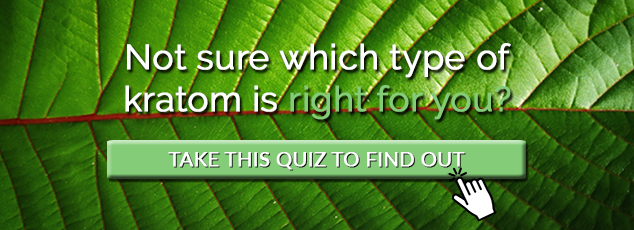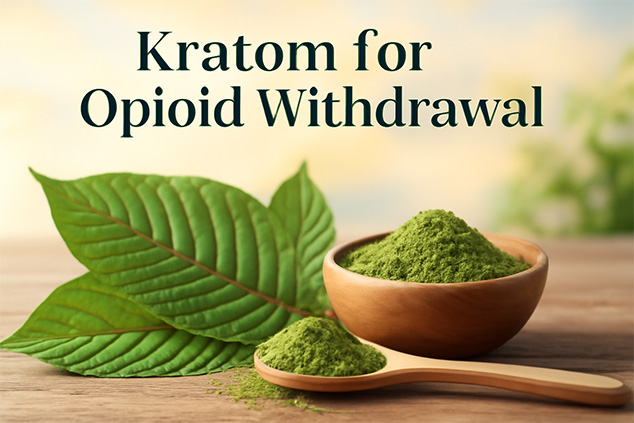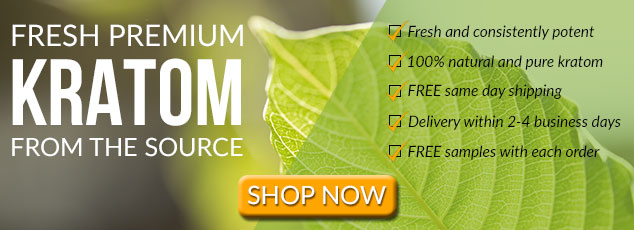Taking kratom for opioid withdrawal is by far one the most common uses of the herb. So, if you’ve turned to the internet to look it up, you’re likely wondering whether it works and, most importantly whether it’s safe.
Is it indeed a miracle drug or will it do more harm than good? After all, the internet I flooded with articles on the dangers of kratom and the authorities keep warning against its use.
As usual, let’s dive in and find answers to your questions about the use of kratom for opioid withdrawal.
What Are Opioids and Why Are They Dangerous?
Opiates and opioids are terms often used interchangeably. Though they are not exactly the same. Both opioids and opiates derive from the opium poppy and have potent pain-relieving properties.
Opiates are natural substances that come directly from the poppy plant. For instance, codeine and morphine are naturally present and can be extracted from it.
Opioids, on the other hand, are synthetic or semi-synthetic. They are either completely manufactured or combined with natural opiates. Fentanyl and methadone are examples of completely synthetic opioids while oxycodone and hydrocodone are semi-synthetic.
When administered and/or absorbed opioids (and opiates, too; but we’ll start referring to them interchangeably) travel through our body and eventually attach to opioid receptors in our brains.
That alters our perception of pain and creates feelings of pleasure. So, the pain is still there but we no longer feel it until the effects of opioids wear off.
According to Mayo Clinic (and other medical sites) opioid use us safe as long as one uses them according to the doctor’s instructions. However, opioids have high abuse potential and can cause respiratory depression.
If you take opioids for a long period of time, you have a high likelihood of developing dependence. Your body adapts to the substance and requires more to achieve the same effects. Yet, in high doses, opioids lower your heart rate and breathing. This can be fatal especially if taken in combination with alcohol and other medication.
What Is Opioid Withdrawal and Why Is It a Big Deal?
If you take opioids for a long period of time, your body becomes accustomed to them. If you suddenly stop taking them, it is highly likely that you will experience negative physical symptoms such as trembling, sweating, and cravings for another dose.
In addition to that, the pain-relieving effects wear off and you’re left feeling the pain that opioids were helping you to deal with.
According to global statistics, at this time the United States is the country with the most frequent opioid prescription and use in the world. Doctors prescribe opioids to every one in 20 Americans. In Germany numbers are also high – one in every 30 people there gets an opioid prescription.
From there, numbers drop drastically. The third on the list is Japan where doctors prescribe opioids to only one per every 800 people. That is a dramatic difference, yet data gets even worse. Sadly, opioid use is increasing in Nordic countries as well.
As a result of such frequent prescribing of opioids, millions of Americans suffer from opioid addiction and 130 people die from an opioid overdose every day. This includes prescription opioids as well as illegal opioids like heroin. Curiously, 80% of those who use heroin started by prescription opioid misuse.
This isn’t just hurting the American population, but also the economy. The CDC estimated an economic burden of nearly $80 billion a year. This includes health care costs, substance addiction treatment costs, criminal justice costs, and lost work productivity.
This situation is known as the opioid crisis or the opioid epidemic.

How Did the Opioid Epidemic Happen in the First Place?
Up until the late 1990s, opioids weren’t frequently prescribed. Then, pharmaceutical companies reassured the American medical community that prescription opioids would not cause addiction. As a result, physicians started prescribing opioids at an increased rate.
This led to increased misuse of prescription and non-prescription opioids. Approximately a decade later, in 2017, the HHS declared the Opioid Crisis a public health emergency.
Why would pharmaceutical companies do something like that?
Well…. profits. And it’s not just us saying that.
In January 2019, a report was released. Based on Obamacare data, researchers made an association. The more pharmaceutical companies spent on marketing prescription opioids, the more doctors prescribed them and, sadly, the more opioid-related deaths occurred.
Common Ways of Treating Opioid Withdrawal
The most common ways of treating opioid addiction are one of the following:
- Gradually reducing and eliminating opioids. While a person can quit opioids, they still have to struggle with the pain that got them to use opioids in the first place. This means they their quality of life, satisfaction as well as the ability to perform day-to-day tasks are not optimal.
- Other medication. Doctors prescribe drugs like Buprenorphine temporarily to transition from opioid use. The problem is that Buprenorphine is an opioid. So, doctors recommend treating opioid addiction with an opioid.
- Detoxification through the use of opioid antagonist. This treatment method involves medication that binds with opioid receptors instead of opioids. After this treatment, the patients still suffer from pain.
Yet, people who suffer from opioid addiction and withdrawal seek alternative treatment methods such as kratom.
Does Kratom for Opioid Withdrawal Work?
If you search for kratom for opioid withdrawal, you’ll come across sources that state that kratom is ineffective, has no medicinal use, or is even dangerous. Yet, kratom users state the opposite. Statements like “kratom saved my life” are not uncommon. Millions of Americans are using kratom for opioid withdrawal and other health conditions, and the popularity of the herb is only growing.
Nonetheless, the government seems to be pushing an anti-kratom agenda. The FDA repeatedly referred to kratom as another opioid and even developed its own computer algorithm that proved it. They mentioned 44 kratom deaths as proof for that. Then, the CDC issued a warning statement about nearly a hundred deaths caused by kratom.
Another study involved a computer algorithm that scanned 1.5 million Reddit posts to identify alternative treatment methods for opioid withdrawal and their risks. It identified kratom for opioid withdrawal as one of the three main alternative treatment methods. No actual risks appeared in the post. The article describing the study only included speculations on the risks of using kratom for opioid withdrawal.
However, examining these cases closer showed that kratom wasn’t the only substance present. Kratom was the only substance in just a few cases, and even in those, the authorities didn’t rule out the presence of other substances.
Final Thoughts
Though kratom hasn’t been extensively studied and we still don’t know everything about it, one thing is clear. The numbers don’t make sense. Over a hundred people a day die from opioid overdose. Yet, the authorities consider more opioids as a safer alternative to kratom when it’s questionable whether the kratom deaths actually happened due to kratom.
While kratom can be rather expensive, it is still in general cheaper than opioid medication. Yet, the profits from it aren’t going to the pharmaceutical industry but individual vendors.
So, could this be a reason for the anti-kratom agenda? Is kratom truly as dangerous or is it simply cash in on a herb that is actually making a massive difference?
What are your thoughts on it? Is kratom effective treatment for opioid withdrawal? We’d love to discuss this topic with you.



Leave a Reply